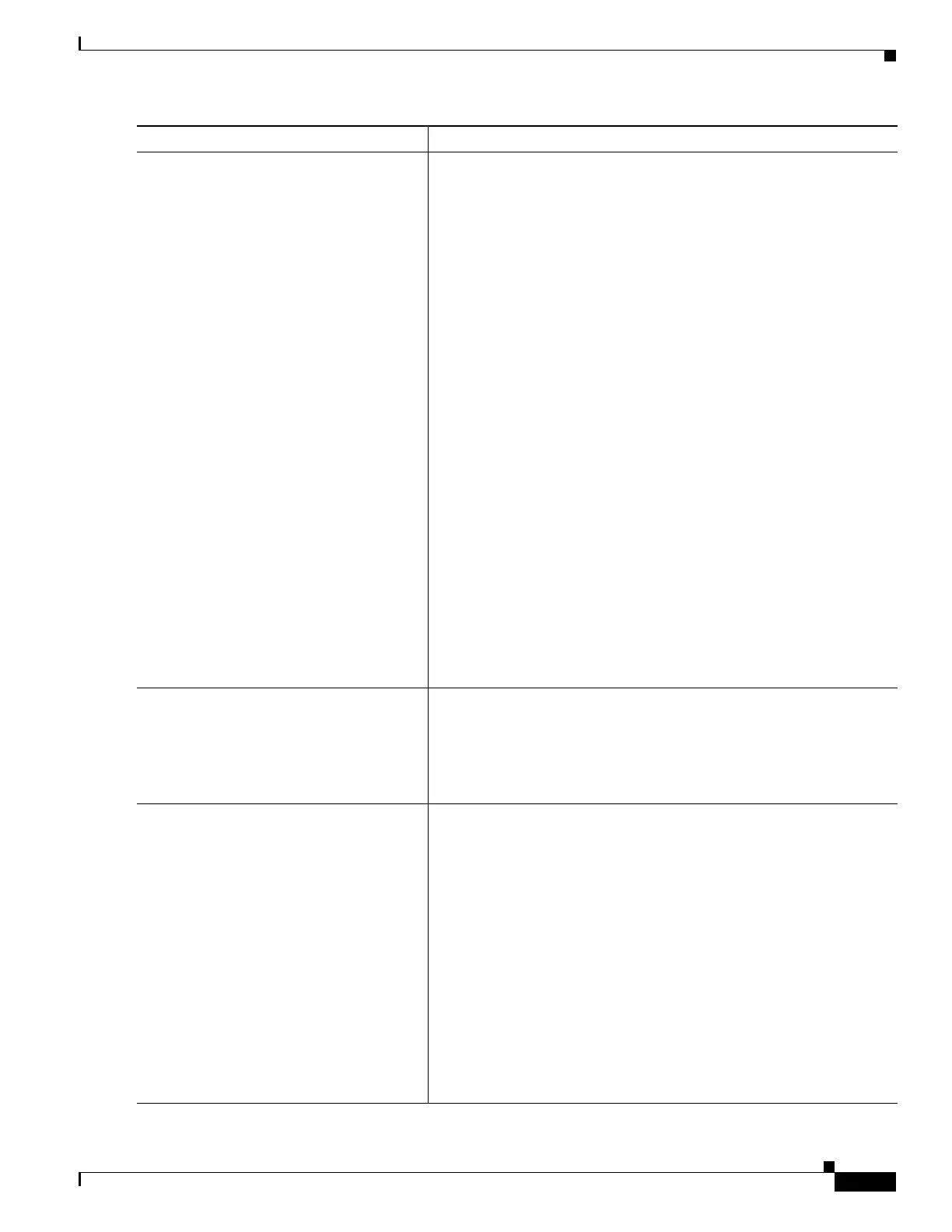1-61
Catalyst 3750-X and 3560-X Switch Software Configuration Guide
OL-25303-03
Chapter 1 Configuring QoS
Configuring Standard QoS
Step 5
trust [cos | dscp | ip-precedence] Configure the trust state, which QoS uses to generate a CoS-based or
DSCP-based QoS label.
Note This command is mutually exclusive with the set command
within the same policy map. If you enter the trust command,
go to Step 6.
By default, the port is not trusted. If no keyword is specified when the
command is entered, the default is dscp.
The keywords have these meanings:
• cos—QoS derives the DSCP value by using the received or default
port CoS value and the CoS-to-DSCP map.
• dscp—QoS derives the DSCP value by using the DSCP value from
the ingress packet. For non-IP packets that are tagged, QoS derives
the DSCP value by using the received CoS value; for non-IP
packets that are untagged, QoS derives the DSCP value by using
the default port CoS value. In either case, the DSCP value is
derived from the CoS-to-DSCP map.
• ip-precedence—QoS derives the DSCP value by using the IP
precedence value from the ingress packet and the
IP-precedence-to-DSCP map. For non-IP packets that are tagged,
QoS derives the DSCP value by using the received CoS value; for
non-IP packets that are untagged, QoS derives the DSCP value by
using the default port CoS value. In either case, the DSCP value is
derived from the CoS-to-DSCP map.
For more information, see the “Configuring the CoS-to-DSCP Map”
section on page 1-73.
Step 6
set {dscp new-dscp | ip precedence
new-precedence}
Classify IP traffic by setting a new value in the packet.
• For dscp new-dscp, enter a new DSCP value to be assigned to the
classified traffic. The range is 0 to 63.
• For ip precedence new-precedence, enter a new IP-precedence
value to be assigned to the classified traffic. The range is 0 to 7.
Step 7
police rate-bps burst-byte [exceed-action
{drop | policed-dscp-transmit}]
Define a policer for the classified traffic.
By default, no policer is defined. For information on the number of
policers supported, see the “Standard QoS Configuration Guidelines”
section on page 1-39.
• For rate-bps, specify average traffic rate in bits per second (b/s).
The range is 8000 to 10000000000.
• For burst-byte, specify the normal burst size in bytes. The range is
8000 to 1000000.
• (Optional) Specify the action to take when the rates are exceeded.
Use the exceed-action drop keywords to drop the packet. Use the
exceed-action policed-dscp-transmit keywords to mark down the
DSCP value (by using the policed-DSCP map) and to send the
packet. For more information, see the “Configuring the
Policed-DSCP Map” section on page 1-75.
Command Purpose

